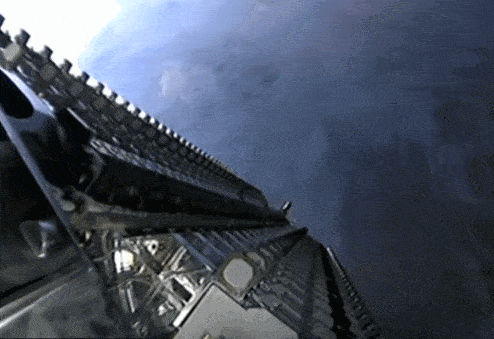[The stream is slated to begin at 9:40 a.m. EST. Please refresh the page if you do not see the player above.]
SpaceX is set to launch another 60 of its own internet satellites on Monday morning from Cape Canaveral, Florida, in a mission that will also set company records for reusing its rockets.
Starlink represents SpaceX’s ambitious plant to create an interconnected network of as many as 30,000 satellites, to beam high-speed internet to consumers anywhere in the world. This is the second full launch of Starlink satellites, as SpaceX launched the first batch of 60 in May. The company sees while SpaceX works toward its goal of flying humans to and from Mars.
Monday’s launch also represents the fourth mission for SpaceX’s Falcon 9 rocket booster, which landed and was reused after three previous launches. The booster, the large bottom portion of the rocket, previously launched satellites and then landed successfully for missions in July 2018, October 2018 and February 2019.
Additionally, SpaceX is using a fairing (the rocket’s nosecone) that the company fished out the Atlantic Ocean after a mission in April. The company has been working to catch the fairing halves in a net strung above the decks of two boats, using parachutes and onboard guidance systems to slowly fly the fairings back into the nets. SpaceX caught its first fairing half on a boat in June.
A stack of 60 SpaceX Starlink satellites float in space before deploying during the company’s first mission in May.
SpaceX | gif by @thesheetztweetz | CNBC
The company has raised more than $1.3 billion this year to build both Starship, the massive rocket it wants to use to fly people to the moon and Mars, and Starlink. The company is building multiple Starship rockets at once, as founder Elon Musk has the company on an ambitious timeline to begin launching Starship regularly and prove that it can be reused easily, like an aircraft.
SpaceX President Gywnne Shotwell in October told a crowd of investors in New York City that SpaceX aims to “get to a cadence of launching 60 every other week to fill out the constellation” for Starlink.
“We need 360 to 400 to have a constant connectivity where the satellites can end up through the ground talking to each other. Once we get to 1,200 satellites, we will have coverage of the whole globe,” Shotwell said.
Shotwell said the company’s board of directors in 2012 realized the profit margins from the commercial satellites it was launching for customers were “much higher” than SpaceX’s launch business. Musk estimates Starlink could generate more than $30 billion per year – at least 10 times what SpaceX could bring in at best from its launch business.
Musk in October said he sent a tweet using a Starlink internet connection, exclaiming “Whoa, it worked” after it published successfully.
Unlike traditional satellites, Starlinks will have limited lifespans of about five years, Shotwell explained. SpaceX will “refresh the technology” of the Starlink network by rapidly replacing the satellites, which are designed to intentionally burn up in the Earth’s atmosphere.
“The satellites will be limited in their life because the longer you want the satellites to live on orbit the more money you put have to put into it,” Shotwell said. “We will be continually launching these satellites to refresh the technology, to address any issues with the satellites, to put up ones that are working better in its place.”
